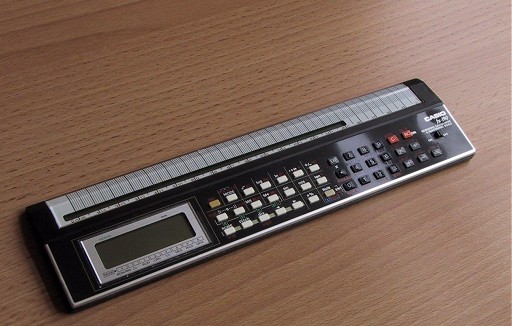casio fx-190
despite the initial simplistic looks, this machine has some very advanced as well as unusual features. it supports fractions, statistics, six levels of parentheses (no implied multiply), trigs and logs, powers, roots, cube root (no hyperbolics) and its programmable.
it appears to have about 55 steps of blind-man's program. there are no labels, but a loop can be created that jumps back to the start of the program. the instructions, x>0, x<=M and RTN do this, although i cant find much use for this feature except as means to reject invalid input. you can, however, scale and markup the ruler display inside the program. and this seems to be the purpose of its programmability, to write short scaling and display formula with input validation. the run key has functions ENT and HLT which, when programmed, cause enter (ENT) and answer (HLT) annunciators to appear spookily reminiscent of the fx-201p
there are some other unusual features. the scale display has cursor keys which position a value. keying in a value will scroll to the position and using the cursors a value at a point can be read off. the scale display can also be reversed so that it operates the same but from right to left instead of left to right. there are 8 modes to this machine; scaling, triangle, run, learn, stats, deg, rad, grad. the triangle mode is novel as it has a built-in heron's triangle formula. you can supply the length of the sides a, b & c and get `s', the area and `theta' the angle between a & b.

